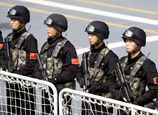
If you're a movie buff, you've surely seen some of the 180-something kung fu flicks that feature the indomitable fighter Huang Feihong. It turns out he was not only a real historical figure, but spent 60 years practicing medicine — starting from 1863 — in Xiguan.
Even though most of the screen stories are fictional, you can still be imbued with the authentic flavor of an era when Western influence seeped into China and sometimes created a fascinating hybrid.
Saunter south across a bridge, you'll find yourself in the small island of Shamian, where 19th-century European architecture reigned supreme.
Once a British and French concession, the 0.3-sq-km island had churches, consulates and banks. Now, it is mostly cafes and hotels, the most famous being White Swan Hotel, a landmark from the early 1980s.
Here, the pace of life is even slower, and one may not find it strange to sit on a bench for hours, gawking at boats that cruise up and down the river, as I did many times when I was living in the city.
Imagine old-style barges with sails, and you'll get a picture of late 19th-century or early 20th-century Guangzhou with the hustle and bustle befitting the earliest Chinese city to open to the world.
 |














 Sex case leads to warnings about apps on smartphones
Sex case leads to warnings about apps on smartphones


![]()
